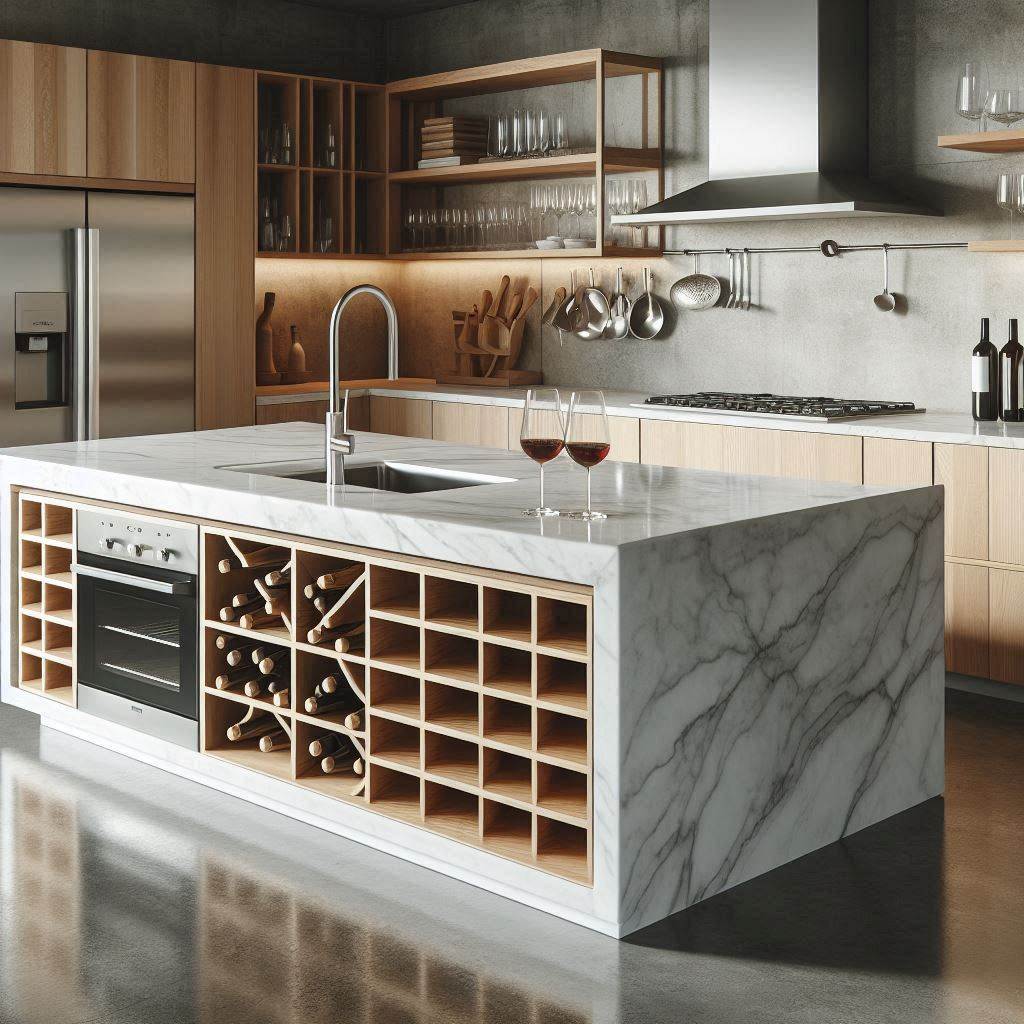A kitchen island is a popular design feature in modern kitchens, adding functionality, style, and increased workspace. However, installing plumbing for a kitchen island on a concrete floor can be challenging, especially for homeowners who lack plumbing knowledge. This guide will provide step-by-step instructions on how to install kitchen island plumbing on a concrete floor, including the tools and materials required, common issues to avoid, and safety tips.
Gather the Necessary Tools and Materials
Before you begin installing plumbing for your kitchen island on a concrete floor, it’s essential to gather all the necessary tools and materials. These include a drill, hammer drill, hole saw, pipe cutter, adjustable wrench, PEX crimping tool, PEX tubing, copper pipes, plumbing fittings, drain assembly, and a plumber’s putty. It’s essential to ensure that all the tools and materials are of high quality to ensure durability and prevent potential leaks in the future.
Plan the Layout
The next step is to plan the layout for the kitchen island plumbing. This involves determining the location of the sink, dishwasher, and any other plumbing fixtures. It’s essential to ensure that the plumbing is installed in the most convenient location to avoid unnecessary disruptions during use.
You should also consider the size of the island, the location of the water supply and drain, and the type of plumbing materials to be used. It’s crucial to ensure that the layout is in compliance with local building codes and regulations.
Prepare the Concrete Floor
Preparing the concrete floor is a critical step in installing kitchen island plumbing. First, locate the existing water supply and drain lines, and mark their positions on the concrete floor. Next, use a hammer drill with a masonry bit to create holes in the concrete floor at the marked positions.
It’s essential to ensure that the holes are deep enough to accommodate the plumbing fixtures and fittings. If the plumbing fixtures are not directly below the holes, use a hole saw to drill through the concrete floor.

Install the Water Supply Lines
The next step is to install the water supply lines. This involves connecting the hot and cold water pipes to the water supply lines. If copper pipes are used, use a pipe cutter to cut the pipes to the required length.
Use plumbing fittings such as couplings, elbows, and tees to connect the pipes to the water supply lines. If PEX tubing is used, use a PEX crimping tool to connect the tubing to the plumbing fittings.
Install the Drain Lines
The next step is to install the drain lines. This involves connecting the drain assembly to the existing drain line. Use a wrench to tighten the fittings and ensure that they are securely in place. If there is no existing drain line, it may be necessary to install a new one. In this case, consult a plumber to determine the best approach.
Install the Sink and Dishwasher
Once the water supply and drain lines are in place, it’s time to install the sink and dishwasher. This involves connecting the water supply lines and drain lines to the sink and dishwasher.
It’s essential to ensure that all the plumbing connections are tight and secure to prevent leaks. Apply plumber’s putty to the sink and dishwasher flanges to create a watertight seal.
Test the Plumbing
After completing the installation, it’s essential to test the plumbing to ensure that it’s working correctly. Turn on the water supply and check for leaks around the plumbing connections. Check the drain lines for proper drainage by running water through the sink and dishwasher. If any issues are detected, make the necessary adjustments before using the kitchen island.
Common Issues to Avoid
When installing kitchen island plumbing on a concrete floor, there are several common issues to avoid. These include:
- Incorrectly locating the plumbing fixtures, resulting in inconvenient use or obstructing traffic flow in the kitchen.
- Using low-quality tools and materials, resulting in potential leaks and expensive repairs in the future.
- Not following local building codes and regulations, resulting in safety hazards and potential legal issues.
- Not testing the plumbing after installation, resulting in undetected leaks that can cause water damage and mold growth.
- Rushing the installation process, resulting in improper connections and potential leaks.
Safety Tips
When installing kitchen island plumbing on a concrete floor, it’s essential to take safety precautions to prevent accidents and injuries. These include:
- Wearing protective gear such as safety goggles, gloves, and a dust mask to prevent injuries from concrete dust and debris.
- Turning off the water supply and electricity before beginning the installation to prevent accidents.
- Using proper lifting techniques when handling heavy tools and materials to prevent back injuries.
- Following manufacturer’s instructions for all tools and materials to prevent accidents and ensure proper usage.
- Keeping the work area clean and organized to prevent slips, trips, and falls.
Conclusion
Installing kitchen island plumbing on a concrete floor can be challenging, but with the right tools, materials, and knowledge, it’s a DIY project that most homeowners can accomplish. Proper planning, preparation, and attention to detail are essential to ensure a successful installation that meets local building codes and regulations.
By following the steps outlined in this guide and avoiding common issues and taking safety precautions, you can enjoy a functional and stylish kitchen island with plumbing that works correctly and efficiently.

